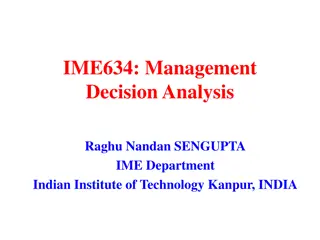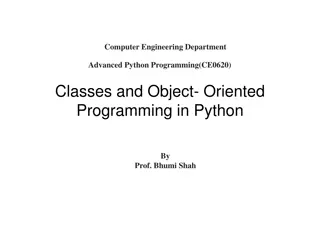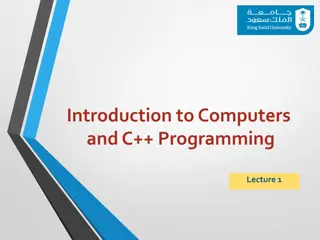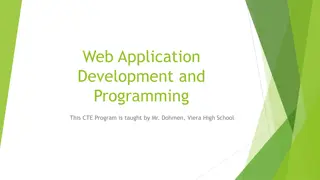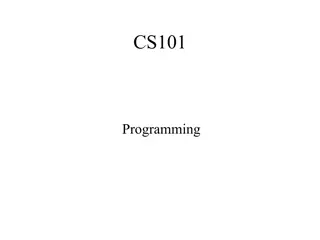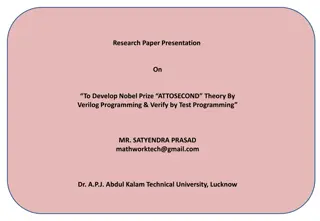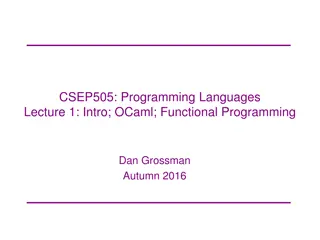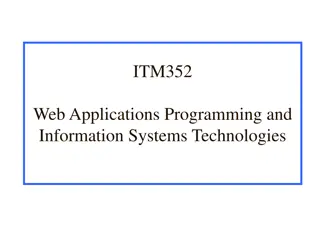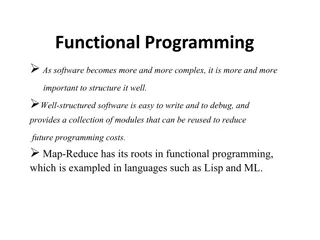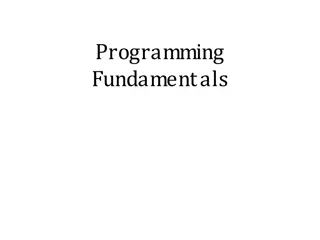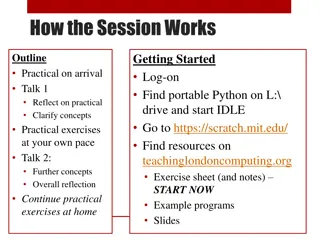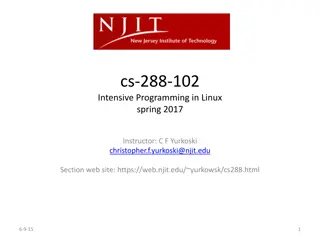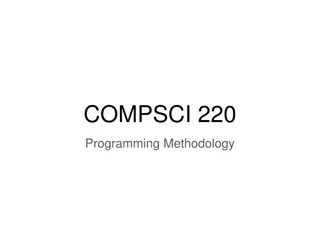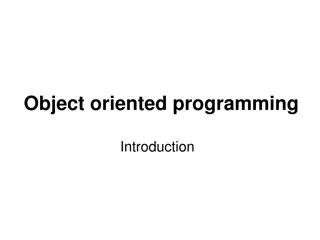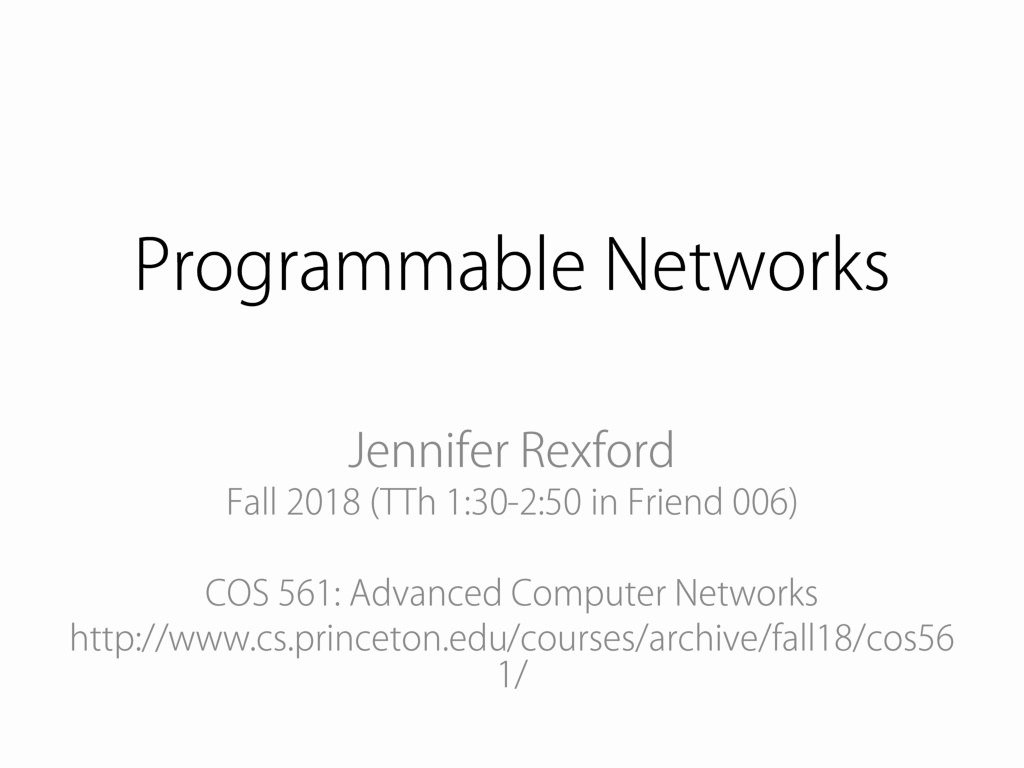
Efficient Data Plane API Rules and Traffic Management
Explore a new approach to managing rules in a data plane API, prioritizing actions like dropping, forwarding, modifying, and sending data to the controller. The system disambiguates overlapping patterns, counts bytes and packets, and dynamically unfolds rules as traffic arrives. Learn how to suppress unwanted events efficiently in this informative content.
Download Presentation

Please find below an Image/Link to download the presentation.
The content on the website is provided AS IS for your information and personal use only. It may not be sold, licensed, or shared on other websites without obtaining consent from the author. If you encounter any issues during the download, it is possible that the publisher has removed the file from their server.
You are allowed to download the files provided on this website for personal or commercial use, subject to the condition that they are used lawfully. All files are the property of their respective owners.
The content on the website is provided AS IS for your information and personal use only. It may not be sold, licensed, or shared on other websites without obtaining consent from the author.
E N D
Presentation Transcript
Simple, Open Data-Plane API Prioritized list of rules Pattern: match packet header bits Actions: drop, forward, modify, send to controller Priority: disambiguate overlapping patterns Counters: #bytes and #packets 1. srcip=1.2.*.*, dstip=3.4.5.* drop 2. srcip=*.*.*.*, dstip=3.4.*.* forward(2) 3. srcip=10.1.2.3, dstip=*.*.*.* send to controller 3
From Rules to Predicates Traffic counters Each rule counts bytes and packets Controller can poll the counters Multiple rules E.g., Web server traffic except for source 1.2.3.4 1. srcip = 1.2.3.4, srcport = 80 2. srcport = 80 Solution: predicates E.g., (srcip != 1.2.3.4) && (srcport == 80) Run-time system translates into switch patterns 13
Dynamic Unfolding of Rules Limited number of rules Switches have limited space for rules Cannot install all possible patterns Must add new rules as traffic arrives E.g., histogram of traffic by IP address packet arrives from source 5.6.7.8 1. srcip = 1.2.3.4 2. srcip = 5.6.7.8 1. srcip = 1.2.3.4 Solution: dynamic unfolding Programmer specifies GroupBy(srcip) Run-time system dynamically adds rules 14
Suppressing Unwanted Events Common programming idiom First packet goes to the controller Controller application installs rules packets 15
Suppressing Unwanted Events More packets arrive before rules installed? Multiple packets reach the controller packets 16
Suppressing Unwanted Events Solution: suppress extra events Programmer specifies Limit(1) Run-time system hides the extra events not seen by application packets 17
SQL-Like Query Language Get what you ask for Nothing more, nothing less SQL-like query language Familiar abstraction Returns a stream Intuitive cost model Minimize controller overhead Filter using high-level patterns Limit the # of values returned Aggregate by #/size of packets Traffic Monitoring Learning Host Location Select(packets) * GroupBy([srcmac]) * SplitWhen([inport]) * Limit(1) 18
Avoiding Transient Disruption Invariants No forwarding loops No black holes Access control Traffic waypointing
Installing a Path for a New Flow Rules along a path installed out of order? Packets reach a switch before the rules do packets Must think about all possible packet and event orderings. 21
Update Consistency Semantics Per-packet consistency Every packet is processed by policy P1 or policy P2 E.g., access control, no loops or blackholes Per-flow consistency Sets of related packets are processed by policy P1 or policy P2, E.g., server load balancer, in-order delivery, P1 P2
Policy Update Abstraction Simple abstraction Update entire configuration at once Cheap verification If P1 and P2 satisfy an invariant Then the invariant always holds Run-time system handles the rest Constructing schedule of low-level updates Using only OpenFlow commands! P1 P2 23
Two-Phase Update Algorithm Version numbers Stamp packet with a version number (e.g., VLAN tag) Unobservable updates Add rules for P2 in the interior matching on version # P2 One-touch updates Add rules to stamp packets with version # P2 at the edge Remove old rules Wait for some time, then remove all version # P1 rules 24
Update Optimizations Avoid two-phase update Na ve version touches every switch Doubles rule space requirements Limit scope Portion of the traffic Portion of the topology Simple policy changes Strictly adds paths Strictly removes paths 25
Control Loop Abstractions Policy Composition Consistent Updates SQL-like queries OpenFlow Switches 27




